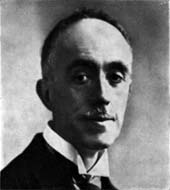Rose wrote:Enjoy your break, Langley. Thanks for the link to the obituary. I'm wishing for empty walls and mult-colored stickies about now. A visual timeline would be helpful.
It seems to me that a study of electroculture might provide the opportunity for practical investigations such effects....
or not.
rose
I confess I was to be away from the net for a month. It has gotten extremely frustating - just me - entirely self generated.
Seems Im addicted.
A visual time line which is complete is very difficult. Even though things have been declassified, try for example to find the discoverers of each fission product and the dates of discovery. Try to find a pre 1945 Segre Chart. Everybody into the subject knows that Curie discovered polonium for example. But who discovered strontium 90 as a fission product? or the rest of the 200 odd. Now, if that can't be done not much chance of assembling a chart of who was where when doing what. What little is readily available shows an interesting nexus between Brown and Gunn. When you look at what both did in their youth, its interesting. Gunn lodged patent aps which unknow to him were never forwarded or acted up.
There seems to be a merging of interests. Even though the work of Naval Research Lab re stuff related to Manhattan Project seems to have been deliberately unacknowledged for years, it may be that by looking at Gunn we might see a more public face on activities which are a pointer for things Brown did independently then and later. The relationship between Brown and Gunn is an interesting mystery. The interaction between science and society in this specific situation is interesting.
Regardless of what Brown was working on, the mere fact that he was within the area which was working on fission means he may have fallen under the Manhattan Project security clamp.
Indeed his proposed method of propulsion for a silent submarine may have been compared to proposed fission propelled craft, and/or his method may have benefitted from nuclear power as a power source.
In which case Brown may have been in the loop regarding the theorectical specs of proposed naval reactors. Such things were covered by high levels of security from 1942. As Groves intevened and seconded the Naval resources and program for the bomb, the Naval project was put on hold. As Brown was in the Navy in large part as a means to conduct his research (as well as to enjoy being in the Navy), his sudden departure may reflect many things, including taking his specific work out of the direct reach of Groves. Reasons for leaving may have been to avoid the delay in his research staying in the Navy might have entailed at that time, and to avoid having his work tangled up in any way with weapon, rather than propulsion, work.
There is no reason why the applications as deployed on the B2 Spirit could not be deployed on a submarine. In fact, the benefit might be greater. The stealth might be greater, the propulsive effect greater, and the ability to use the field as an integral part of a sonar system seems to me reasonable. I know of no birds of the air which generate a strong electric field. The Moray eel and other water creatures however do. Whether such creatures benefit by way of improved movement through water I do not know.
On the chronology which impacted the NRL and Gunn, and possibly Brown, the world's first reactor went critical as follows:
"While arrangements were proceeding for the construction of full-size plutonium production reactors, critical questions remained about their basic design. The Italian physicist Enrico Fermi hoped to answer some of these questions with CP-1, his experimental "Chicago Pile #1" at the University of Chicago.
On December 2, 1942, after a series of frustrating delays, CP-1 first achieved a self-sustaining fission chain reaction."
It was very secret. It enabled the production of plutonium, the second route to the bomb.
The reactor as a power plant for submarines had to wait for another day.
If Brown had hoped the pre war Naval nuclear POWER program would enable the rapid uptake of his designs at an early date, he may have been very severely disappointed. Because Groves stopped it in its tracks.
Given the early date at which Gunn and the Navy met with Fermi, re nuclear propulsion, what Brown knew of this potential power source is moot. How much security he was bound by as a result is also moot. His refusal to be totally bound may have been a motivation to leave and take his own secrets with him. Once again, there is a critical issue of conjunction here. In any event, even if Brown was not involved in any way with the Naval power reactor program, he probably occupied physical and organisational places which resulted in him comming into contact with it between 1939 and 1941. ie at a time before such reactors were covered by the AAA status and security of the Manhattan Project or S1 Committee earlier.
Then there's this from the Ahern article:
"According to Gunn, “
t was recognized immediately
[after the discovery of fission] that perhaps here was an answer to the submarine
propulsion problem.” Nuclear power would simultaneously remove the oxygen
problem and provide the submarine with a long cruising range. Gunn’s division
had numerous discussions about the application of the nuclear energy to naval
problems but decided not to present a research program to the no-nonsense Navy
bureau chiefs until they had significant data to back it up.4
While scientists at NRL theorized about the use of nuclear energy, it was Enrico
Fermi’s meeting with Navy representatives in March 1939 that gave nuclear energy
research its start at the laboratory.
Fermi had fissioned uranium in the 20s, but didnt realise it until Ida Nodack pointed it out, and noone listened to her because she was female. Hahn and Strassman couldnt understand how come they got Krypton 85 and Strontium by bombarding Uranium with neutrons in 1938. That they were allowed to publish world wide in Nazi Germany shows that the Nazi's were in no hurry to credit what they saw as "Jewish physics". (The Japanese had not such reservations, having their own scientists working in Germany with Bohr. That was the start of the Japanese bomb programs).
But in 1939 Liz Mietzner working with her own and Bohr's ideas published that Hahn et al had fissioned uranium*. That is, while expecting to make a heavier element Hahn et al actually broken (fissioned) U into 2 lighter fragments. In response to that the Navy Research Lab's Gunn was talking to Fermi in the same year (a mere 50 years from the discovery that Uranium was radioactive) about using fission as a power source for naval vessels.
(*It took females to point out that while the boys were trying to make bigger and bigger nuclei, they were actually splitting them, resulting in "confusing" progeny products) (it is pretty confusing I must admit).
In there somewhere, with some sort of fit, is TT Brown and his work, vision, goals and applications. The Naval Research Labs were delayed by Groves. Would TT Brown be so constrained?
Its a fit, I swear its a fit, Ill go completely utterly bonkers declaring its a fit.
What exactly that fit consisted of I do not know. There's something else - a lot of Navy people were anti bomb and pro nuclear power (nobody is perfect). Including Gunn I believe. Including Barry Commoner. TT Brown associated freely with Bradford Shank, who associated with Linus Pauling, later worked with Commoner against the bomb. Commoner is still involved in the collection of shed baby teeth in order to study the uptake of Radio strontium. He started doing that in the 1950s. (Started in St Louis, current program is the Florida Baby Tooth Project).
Science and society. The sociology of knowledge. The constraints on the public knowledge and the reduction of science to mythology in order to encourage the blind following of leaders.
There is a clear bead to a tradition of scientists who buck control imposed politically. Where does Brown fit into that tradition?
Finally the problem of enriching Uranium potentially occurred to the Naval Research Labs 3 years or more prior to that problem excersizing the mind of Ernest Lawrence. In response he came up with the calutron. Had Brown been exercising his mind on items related to that problem in relation to propulsion (and not weapons) since 1939? Would he not need to know at least the characteristics of the power source for his own technologies if they were to be incorporated on a nuclear sub? Was Brown "extracted" out the Navy for this or related reasons so as to not impede his actual work when Groves stopped the Navy propulsion program? And despite the fact that what the Navy staff knew became an immense security issue to Groves from 1942 (and the S1 committee from 1941)? Ordinarily someone with that knowledge would not be released for reasons of national security. No matter what his or her predilictions, habits, behaviours, preferences, or actions. Hell, he could have married a male camel and still have been promoted.
There's another thing. Gunn complained that the Navy was delayed and its contribution went unacknowledged. That is the case until quite recently. Why on earth? Everything bar the dates of discovery of the fission inventory list was declassified progressively from 1947. Why keep the Navy contribution unacknowledged?
Was it to make following Brown in detail more difficult?

